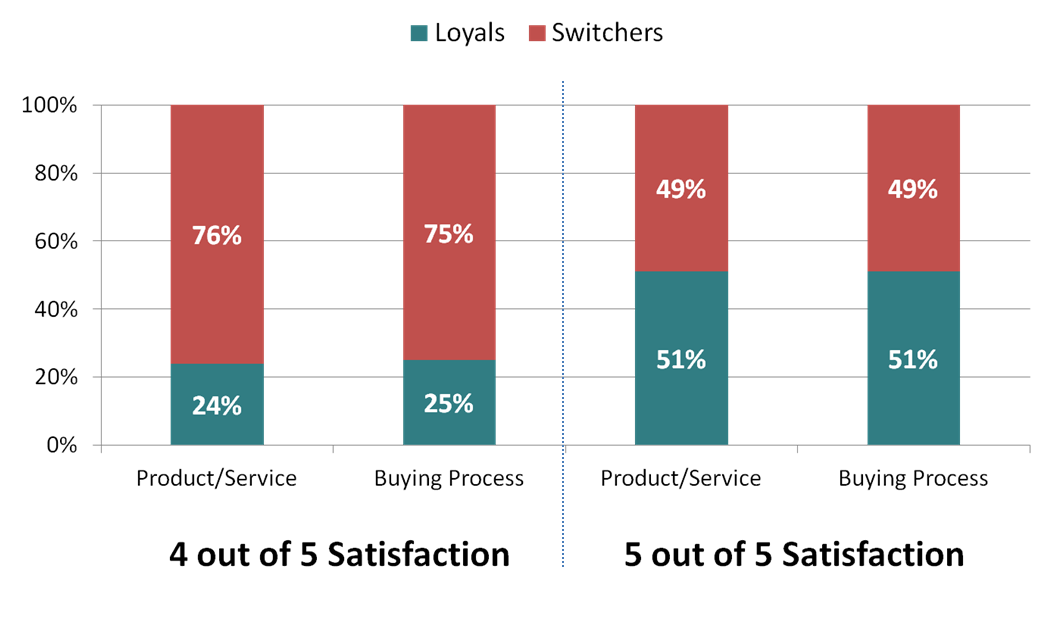Differentiation often starts with marketing, but it’s in the selling process that it truly comes alive.
Analyzing buyers’ perceptions of what they believe led them to buy from the best sales man is crucial. In the analyze three factors were on differentiation. They were:
- Overall value from the company was superior to other options.
- Company offers products and services that are superior to other options.
- Seller differentiated their products and services from the other available options.
Not only did these differentiation factors score near the top of the list, they dominated it. In fact, these three factors were in the top four! Not only is differentiation in the selling process helpful, but it’s of the utmost importance if a seller wants to win.

How to Differentiate in the Selling Process
Here are six tips to consider for differentiating in the selling process:
Create Distinction and Scarcity
Differentiation has two major components: overall distinction and perception of scarcity.
Ask a buyer why they chose one provider over another after they make a purchase and there’s usually more than one single reason. There is a collection of distinctions that ultimately makes the winner stand out in their mind.
When a buyer perceives that something is scarce, it stands out to them, and they tend to desire it more when it’s difficult to find. Scarce, by the way, does not mean “unique.” Uncommon can be just as strong, and it’s usually more believable. It’s typically more important to buyers to have expectations met in commonly discussed areas than it is to get something truly novel. Many sellers promise quality, results, responsiveness, service, continuous improvement, and so on, but few deliver. Those that prove they can deliver well in these areas stand out.
Ditch the USPs
Many sellers are told they must build, and practice, perfect delivery of their Unique Selling Proposition, or USP. USPs are fraught with problems. One of them is that sellers rely too much on them late in the selling process.
Unique selling propositions are for the “wanna go out” early part of the selling process, not the “let’s get married” part that comes at the end. Often, USPs aren’t typically close to unique anyway; one sounds much like the next. More importantly, it’s likely they’re not the key reason a buyer actually buys. You can use USPs to set the table for ongoing discussions when you meet someone, but leave them for the front of the sales process, not the back.

Tailor Your Conversations Based on Buyers’ Experiences
Early in the selling process, sellers get asked, “How are you different?” Often, the answers aren’t that great . When you answer, remember that differentiation implies comparison. It’s up to the seller to find out, “In comparison to what?”
There are two important comparisons:
- How you’re different from the world. When a seller answers the question, this is where they tend to go, using a canned response of standard key points. In any case, you should have these at the ready, but you might not want to use them if you can get to #2.
- It’s more powerful to create a perception with the buyer of how you are different than their experience with people, products or services, and companies similar to yours. Few go here, but when they do, it makes it much more real for the buyer.
When you answer, you might say, “In my experience, how people perceive us as different depends on their experiences with others in our space. Let me ask you, then, what’s your impression of the companies like ours? What have your specific experiences been like when working with them?”
Do this and you’ll create a conversation. Conversation is much richer than a rehearsed answer and will likely present additional areas in which you can separate yourself from your competition.
Differentiate in the Right Areas
Sales winners differentiate in four areas:
- Themselves
- Their offerings
- The company
- The eventual results the buyer can achieve
Depending on the buyer, some areas will be more important than others. It’s up to the seller to find out which.

Practice What You Preach
Sellers that model the behavior create the right perceptions. For example, if a key point about your value and differentiation is responsiveness, be responsive. If you’re responsive in the selling process and the other sellers aren’t, the buyer will, by proxy, assign that value to your company. The other company’s delivery teams may claim to be responsive, too, but you create the perception that your company is more responsive if you model the behavior and the other seller doesn’t.
If a key point of value is providing ideas and advice to improve their businesses, do this in the selling process. If others don’t, they’ll perceive this value to be true about your company.
Differentiate Yourself – You Make a Difference
Many sellers think that company and offerings are the most important areas for differentiation in the selling process, but differentiation of the seller themselves is just as important. Not only is the seller important for winning the sale, they are just as important for ongoing client loyalty.
In our recent research, we found that the buyer’s experience in the buying process is just as predictive of ongoing loyalty as product or service satisfaction.

Find out how differentiation can help you in sales, especially in times of crisis as we are facing these days.
Sign up for DOOR complementary webinar “Selling in times of crisis” on April 7 starting 12.00. ZOOM ID> 305 449 4145
Stay safe, U.F.O.

